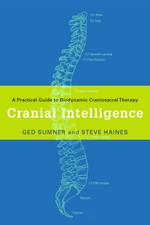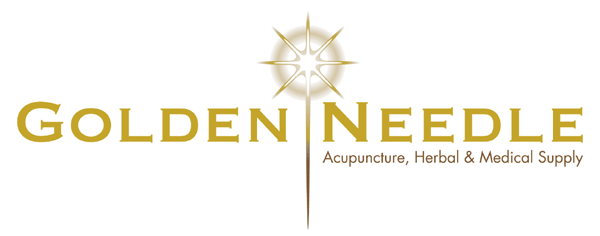Cranial Intelligence: A Practical Guide to Biodynamic Craniosacral Therapy

Cranial Intelligence: A Practical Guide to Biodynamic Craniosacral Therapy
| SKU | SD162 | |
| Brand | Singing Dragon | |
| Unit Size | 254mm x 177.8mm / 10in x 7in, 320pp | |
| Properties | 2010, paperback, ISBN: 978-1-84819-028-3 | |
| Description | Cranial Intelligence A Practical Guide to Biodynamic Craniosacral Therapy Steve Haines and Ged Sumner Foreword by Franklyn Sills At the deepest level of our physiology, all living tissues and fluids expand and contract with the 'breath of life'. Through gentle touch, the skilled practitioner can interact with these subtle rhythms to address physical aches and pains, acute or chronic disease, emotional or psychological disturbances, or simply to promote enduring health and vitality. This new and important textbook demystifies the biodynamic approach to craniosacral therapy and shows how and why it can be so effective at bringing about a natural realignment towards optimal health. The authors describe how to 'listen' and respond appropriately to each client's system, how to create a safe space for working with different kinds of trauma, and how to address specific states of imbalance to support deep-felt and lasting change. Throughout the book, experiential exercises encourage the reader to practice their newly-acquired skills, and refine their knowledge of human anatomy and physiology. A final chapter on practice development covers issues pertinent to practitioners trying to set up and maintain a successful practice. This intensely practical textbook will transform the practice of craniosacral therapists, and contains much that bodyworkers of all kinds will find useful. Contents Acknowledgements. Foreword by Franklyn Sills. Preface. 1. Relational Touch. 1.1. The Relational Field. The phenomenon of contact. Attachment, neuroscience and relational touch. The influence of another pressure. Awareness Exercise: Touching ourselves. Treatment Exercise: Where do we touch from? 1.2. What is Biodynamic Craniosacral Therapy? Overview. A brief history of cranial work. Biodynamics. Clinical Highlight: Cultivating patience and being present. Breath of Life. 1.3. Key Skills 1: How to come into relational touch. Expanding your perceptual field. Awareness Exercise: Exploring space and perceptual fields. Awareness Exercise: State of Balanced Awareness. Treatment Exercise: How much space do you need? Using Self Other Field to help create space. A ritual of contact. Making contact from a State of Balanced Awareness. The inherent treatment plan reveals itself. Becker's 3 stage process. Differentiating tissues, fluids and potency. Treatment Exercise: Differentiating tissues, fluid and potency via sacrum and occiput. Awareness Exercise: Feeling tissues and fluids. Biotensegrity and tissues. Fluid form. Awareness Exercise: The fluid electric body. Stillness. Clinical Highlight: Cultivating Stillness. Clinical Highlight: What happens when we feel nothing? Summary of Chapter 1. 2. The Midline. 2.1. Embryo, midline phenomena and original health. Embryo. Midline and the Early Embryo. Awareness Exercise: Fluid midline versus primal midline - moving between the neural cavity and the vertebral bodies. Treatment Exercise: Primal midline with client sitting. Original health. Treatment Exercise: Fluid midline from feet and shoulders. 2.2. Key Skills 2: States of Balance. States of Balance. Treatment Exercise: State of Balance via a spinal segment. How to support a state of balance. Orienting to tides. Treatment Exercise: Primal midline and long tide. Clinical Highlight: Sacrum and Occiput Holds. 2.3. The Spine. The spine overview. Treatment Exercise: Fluid midline from the occiput and sacrum - side position. Awareness Exercise: Surface anatomy of the axial skeleton. Each vertebra is potentially significant when treating the spine. Facilitation of vertebral segments. Clinical Highlight: Two handed contact on the spine. Clinical Highlight: Treat the spine more often. Summary of Chapter 2. 3. Resources and Overwhelm. 3.1. Resources. 3.2. A first look at trauma. 3.3. Dissociation. 3.4. Activation. Summary of Chapter 3. 4. Stillness and Potency. 4.1. Long tide. Cellular potency. Awareness Exercise: Cellular Intelligence. Awareness Exercise: Hierarchy of Levels. The uncarved block of wood. Awareness Exercise: Long Tide. 4.2. Dynamic Stillness. 4.3. Biodynamic Potencies. The underlying force of life. The potency field of the body. Awareness Exercise: Connecting to your potency field. 4.4. Spirit and cranial work. Know your own model. 'A higher power'. The soul. 'It's all energy'. Science and research. 4.5. Perception and Consciousness. Phenomena and perception. Consciousness. Perceiving the whole body. Summary of Chapter 4. 5. Whole Body Dynamics. 5.1. Reciprocal Tension Membrane. The Core Link. Bone and Membrane. 5.2. Arrangements of fascia in the body. The Transversal. Awareness Exercise: Reciprocal tension in the respiratory diaphragm. Respiratory diaphragm. Treatment Exercise: Relating to the respiratory diaphragm as the natural fulcrum for the connective tissue field. Pelvic Diaphragm. Thoracic Inlet. Other transverse diaphragms. Awareness Exercise: Feeling your deep fascia. The Longitudinal. The falx. The dural tube. The spinal ligaments. The sock of ligaments around the sacrum. Muscle sheaths. Treatment Exercise: Fascial drag and glide from the feet. Spirals and diagonals. Membranes, cavities and bags. 5.3. The Fascial Matrix. Fascia anatomy. Awareness Exercise: The living matrix. Cells talking to cells via the living matrix. Summary of Chapter 5. 6. Craniopelvic Resonance. 6.1. The Vault. 6.2. The Pelvis. 6.3. Feeling Craniopelvic Resonance. Summary of Chapter 6. 7. Birth. 7.1. Birth. Birth Overview. Cranial base patterns. Treatment Exercise: the head as a fluid membrane bag. Treatment Exercise: Supporting space at the SBJ. Sphenoid anatomy. Adult sphenoid. Sphenobasilar junction SBJ. Whole body shapes. Attachment. Pacing and containment. Clinical Highlight: Contact at the SBJ. 7.2. Intraosseous patterns. Overview. Common patterns within the major cranial bones. General approaches to intraosseous patterns. 7.3. Ignition. Prenatal ignitions. Birth ignition. Awareness Exercise: Three ignitions. Ignition in treatment. Potency ignition spaces. Summary of Chapter 7. 8. Visceral Intelligence. 8.1. Organs Overview. Introduction. Principles of working with organs. The gut as a tube. Awareness Exercise: The gut as a tube. Cavities and membranes. Thoracic cavity. Abdominal cavity and the diaphragm. Pelvic cavity. Awareness Exercise: Feeling the cavities. Membranes. Awareness Exercise: The cavities and the diaphragm. Treatment Exercise: Biotensegrity of the peritoneum. 8.2. Organ Anatomy and Dynamics. Thoracic cavity. Lungs. Heart and pericardium. Abdominal cavity. Liver. Treatment Exercise: Working with the liver. Stomach. Pancreas. Spleen. Small Intestine. Large intestine. Kidneys. Pelvic cavity. Bladder. Uterus, Ovaries and Prostrate. Clinical Highlight: Working with organs. Summary of Chapter 8. 9. Neural Matrix. 9.1. Neural Matrix Overview. Treating the brain. Brain motion. 9.2. The Fluid Brain. Embryology of the brain. Awareness Exercise: Differentiating parts of the brain. Ventricles, CSF and deep potency. 9.3. The Brain and Blood. Blood supply to the brain. Awareness Exercise: The carotid flow. Blood return. Treatment Exercise: Relating to the venous sinuses. 9.4. Emotions and the Limbic System. Introduction to emotions. Clinical Highlight: Evidence for mind body connection. Universal emotions. The unique processing of fear. The Felt Sense. Clinical Highlight: The empathetic practitioner. Treatment Exercise: Ventricles and limbic system. 9.5. Stress and Neuro-Endocrine-Immune Responses. The brain stem and activation. The Hypothalamus Pituitary Adrenal (HPA) Axis releases cortisol. Clinical Highlight: Causes of stress. Clinical Highlight: Stress Signs. DHEA. Clinical Highlight: Cortisol effects. 9.6. Pain. Pain is complex and always involves emotion. Treatment Exercise: Nerve flow and spinal cord facilitation. The anatomy of pain. Clinical Highlight: Treatment strategies based on understanding inhibition. 10. The Facial Complex. 10.1. The Face. The complexities of the face and the maxillae. Physiology of the face. Treatment Exercise: Intraoral contact on the maxillae. Zygomatic bones. Orbits. Awareness Exercise: Following the diaphragm of the face. Midline of the face - ethmoid and vomer. The sphenoid and the face. Awareness Exercise: How the sphenoid interacts with the face. The neural face. Cranial nerves that supply the face. Motor supply detail. Sensory supply detail. The metabolic fluid fields of the face. Treatment Exercise: Orienting to the nerve flow and deepening into the fluid fields of the face. 10.2. The Eyes. Overview. Eyes and posture. Eyes and the nervous system. Eye muscles and movement and associated somatic nerves. Optic nerve. Autonomic nervous system and the eyes. The sphenoid and the orbit. Treatment Exercise: The eyes and the sphenoid. 10.3. The Jaw and the TMJ. Clinical Highlight: TMJ self test. Alignment of the jaw via the temporals. Treatment Exercise: Orienting to the temporal bones and alignment of the jaw. Development of the lower jaw. Muscles of the jaw. Ligaments and disc of the temporal mandibular joint. 10.4. The Throat. The hyoid. Awareness Exercise: Posture and the throat. The facial complex and the social nervous system are essential to expressing emotion. Treatment Exercise: The hyoid. Summary of Chapter 10. 11. Joints. 11.1. Introduction to Joints. Synovial joints. Fibrous joints and Cartilaginous joints. Awareness Exercise: Global joint exercise. 11.2. Treating Joints. General principles for working with joints. Treating limbs. Clinical Highlight: Nerve flow. 11.3. Key Joints: Axial Skeleton. Occipital Atlantal Junction OAJ. Treatment Exercise: The occipital atlantal junction (OAJ). Lumbo sacral junction (LSJ). Sacro iliac joints. 11.4. Key Joints: Lower Limb. Hip joints. Hip anatomy. Knee joints. Knee anatomy. Clinical Highlight: Common patterns in the misalignment of the knee according to Dr Mark Charrette DC. Ankle and foot joints. 11.5. Key Joints: Upper Limb. Shoulder. Shoulder anatomy. Elbow, wrist and hand. Elbow, wrist and hand anatomy. Summary of Chapter 11. 12. Practice Development. 12.1. Why do you want to become a craniosacral therapist? Know your purpose. 12.2. How to earn a living as a craniosacral therapist - some thoughts on being in practice. An overview of creating a practice. Be energetic. Make connections. Word of mouth. Sell yourself and cranial work. Short sessions and a course of treatments. Make good decisions at the start. What kind of therapist do you want to be? Making a living out of it. Creating a BCST introduction talk. Creating a brochure and a website. A simple model for change: 'Take the loads off the back of the donkey'. 12.3. Professional considerations. Ongoing training and support. Legal considerations. 12.4. Taking case histories. Treatment records. Clinical Highlight: Some guidance on taking a case history. Useful information - short version. Useful information - long version. 12.5. Assessing your client's health. Clinical Highlight: Basic assessment - how to form a clear picture of someone from a touch perspective. Clinical Highlight: Craniosacral assessment - how to form a clear picture of someone from a craniosacral perspective. Language for touch. Words for change. Words for difficulty. Words for health. Words for process. "How many sessions do I need?" 12.6. How to be a Practitioner of Excellence. Safety in practice. Structure of a treatment session. Being skilled. Developing trust in deeper intelligence. References. Glossary. Index. Reviews 'In Cranial Intelligence, authors Ged Sumner and Steve Haines share decades of research and practical experience in the manual treatment of the human craniosacral system, guiding the reader on an in-depth journey into the body's primal intelligence...The information they present is both accurate and highly informative, backed by the research and practice of many great researchers and physicians in the fields of osteopathic medicine and craniosacral therapy. This is a useful resource for bodyworkers in any manual therapy field.' - ForeWord Reviews Author information Steve Haines has been working in healthcare for over 20 years, and as a bodyworker since 1998. He studied Biodynamic Craniosacral Therapy with Franklyn Sills, Michael Kern and Katherine Ukleja. He is a UK registered chiropractor and also trained as a shiatsu practitioner. Steve lives and works between London and Geneva, and teaches cranial work internationally, including in Switzerland, UK, North America and Malaysia (www.stevehaines.net). Ged and Steve's blog can be found at www.cranialintelligence.com. Ged Sumner is a practicing craniosacral therapist, craniosacral therapy trainer and chi kung teacher. He has also studied shiatsu, healing and attachment based psychoanalytical psychotherapy, and has a degree in Chemistry. He is the director of Body Intelligence Training, which offers biodynamic craniosacral therapy practitioner courses in Europe, North America and Australasia (www.bodyintelligence.com). |
|
| Ingredients | Cranial Intelligence: A Practical Guide to Biodynamic Craniosacral Therapy |
|

